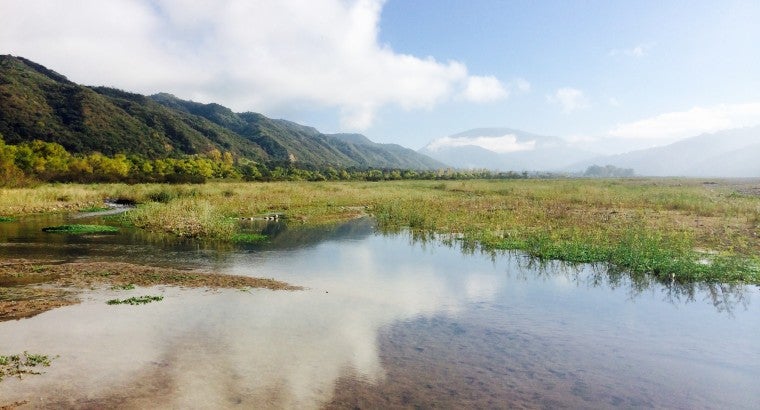When I arrived for the first time in San Salvador de Jujuy in early 2014, I was immediately struck by the beauty and wildness of this region. The colorful mountains of the Seven Colors Hill enveloped the village of and pristine rivers and salt flats lined the valley. With this as our backdrop, I was looking forward to the next couple of days discussing a new project with the local government and a drinking water company.
One of the poorest in Argentina, the province of Jujuy in the far north of the country, does not have enough drinking water to meet its current needs. The aim of the project, therefore, is to take water from a small river nearby, the Yala River, in order to double the amount available, and meet the estimated demands of the growing community over the next 20 years.
In that regard, one of the underlying aims of the Bank’s environmental safeguard policy is to ensure that development projects supported by IDB do not cause irreversible damage to the natural world. Thus, it is very important to take a closer look at potential impacts of this project on the river itself. The historical data we received on the river flow showed a very pronounced difference between the wet and dry seasons. In the dry season there was not enough water in the river to meet the demands in Jujuy, which would mean that the project would have to remove 100% of the water from the Yala River, perhaps for up to 1 month at a time.
This raises an important question: should we let the river run dry? While the people of Jujuy need water, the river has many other roles as well. Rivers are natural networks for species that not only require water to live and feed in, but also provide connection to other rivers allowing for movement of nutrients, individuals and food. The river also passes through a regional protected area, ‘Parque provincial Potrero de Yala,’ that is part of the Yungas Biosphere Reserve. Based on discussion with local stakeholders and for the sake of the environment and the community, it was clear that the Yala River was valued and important for the biodiversity of the area. We could not let the river run dry.
Thus, the next question I needed to answer was how much water to leave in Yala River so that we do not cause problems for the fishes that rely on it. This process is called the “ecological flow.” To do this, we needed to know what species were present in the stream, how much water was available, how the flow varied throughout the year, and what other species rely on the stream.
While determining the ecological flow seems pretty straightforward, a problem arose once we realized that not much good data was available. Ideally, you need at least 10 years of detailed measurements to be able to understand the dynamics of a river. We didn’t have 10 years to wait for data to be collected! Instead, we then had to shift strategies and use historical water-flow monitoring data and rainfall data to estimate the yearly regime of the river (see figure below).
Another challenge arose when we realized that we also didn’t have any information about species in the river. Since Argentina doesn’t have specific regulations on ecological flows, with the help of regional experts and stakeholders, we decided to follow the best practices in Latin America for ecological flows: the water code of Chile, Codigo de Aguas of 1981 and the decree 014 of the Regulation for the Determination of the Minimum Ecological Flow. They recommend that the ecological flow must be at least 20 % of the average monthly flow of the river.
Based on the ecological flow data and the Codigo de Aguas, in the dry months (July to December) less water could be taken from the Yala River to ensure that it never runs dry. Instead, we would only take 80% during the dry months. However, this alone would not resolve our issue since taking less water means that the demand of Jujuy still would not be met.
Finally, after discussing these results with the government agency and the local water provider, a solution was reached: always leave the ecological flow in the Yala River and, in the dry months, take extra water from another source, the Lozano Stream (at a level that would not cause significant impact to this stream).
As a result, this is the first time that the concept of ecological flow will be implemented into a project in the Province of Jujuy. We were able to achieve this by using a scientific-based approach, applying best practices, and, most importantly, collaborating with regional experts and stakeholders to ensure that the realities on the ground in Jujuy were taken into account so that we did not harm the environment and the river while supplying the community with water. I am looking forward to visiting Jujuy in the coming years and to see how our work is helping preserve the beauty of the environment while supplying the people with much-needed water.



Leave a Reply